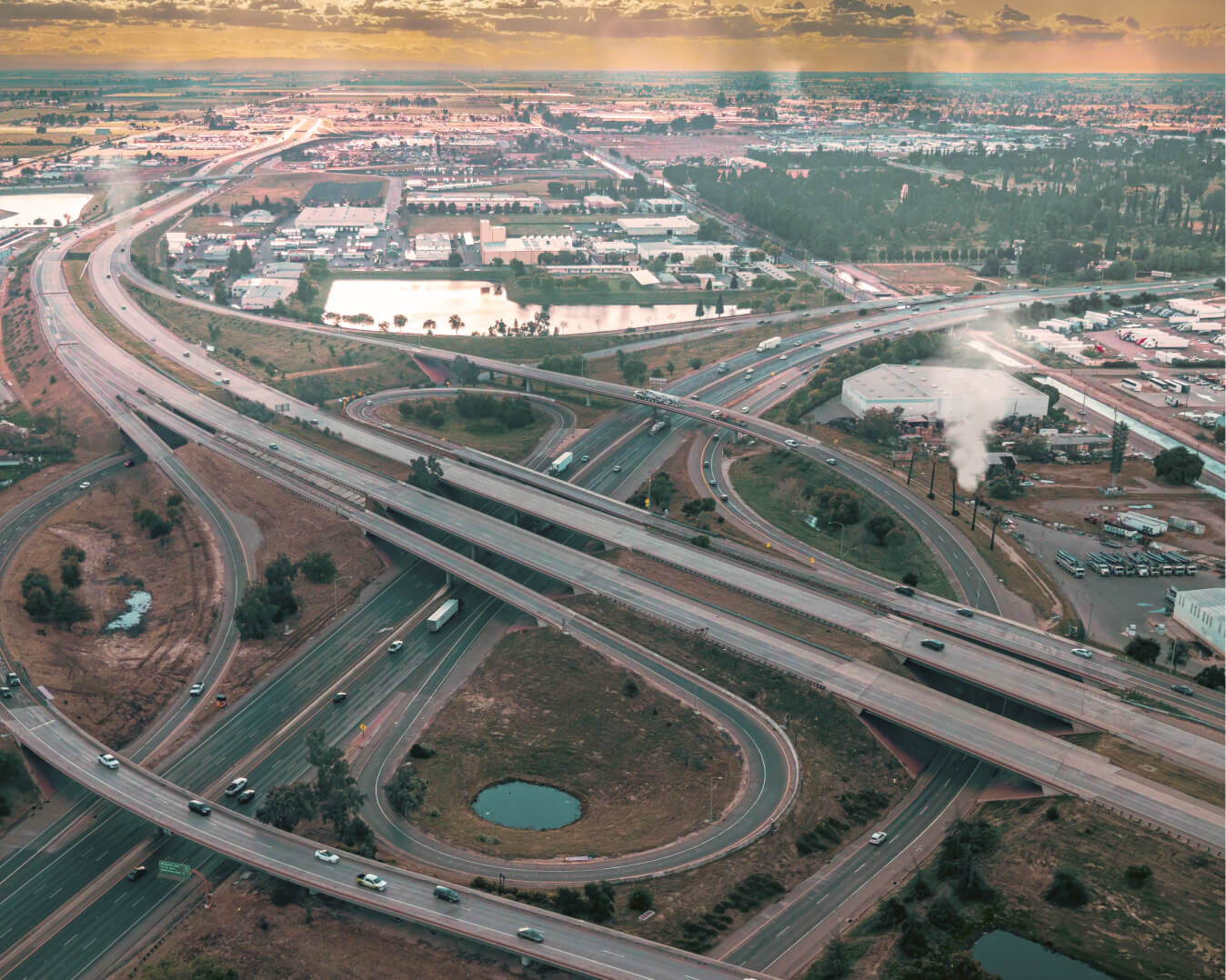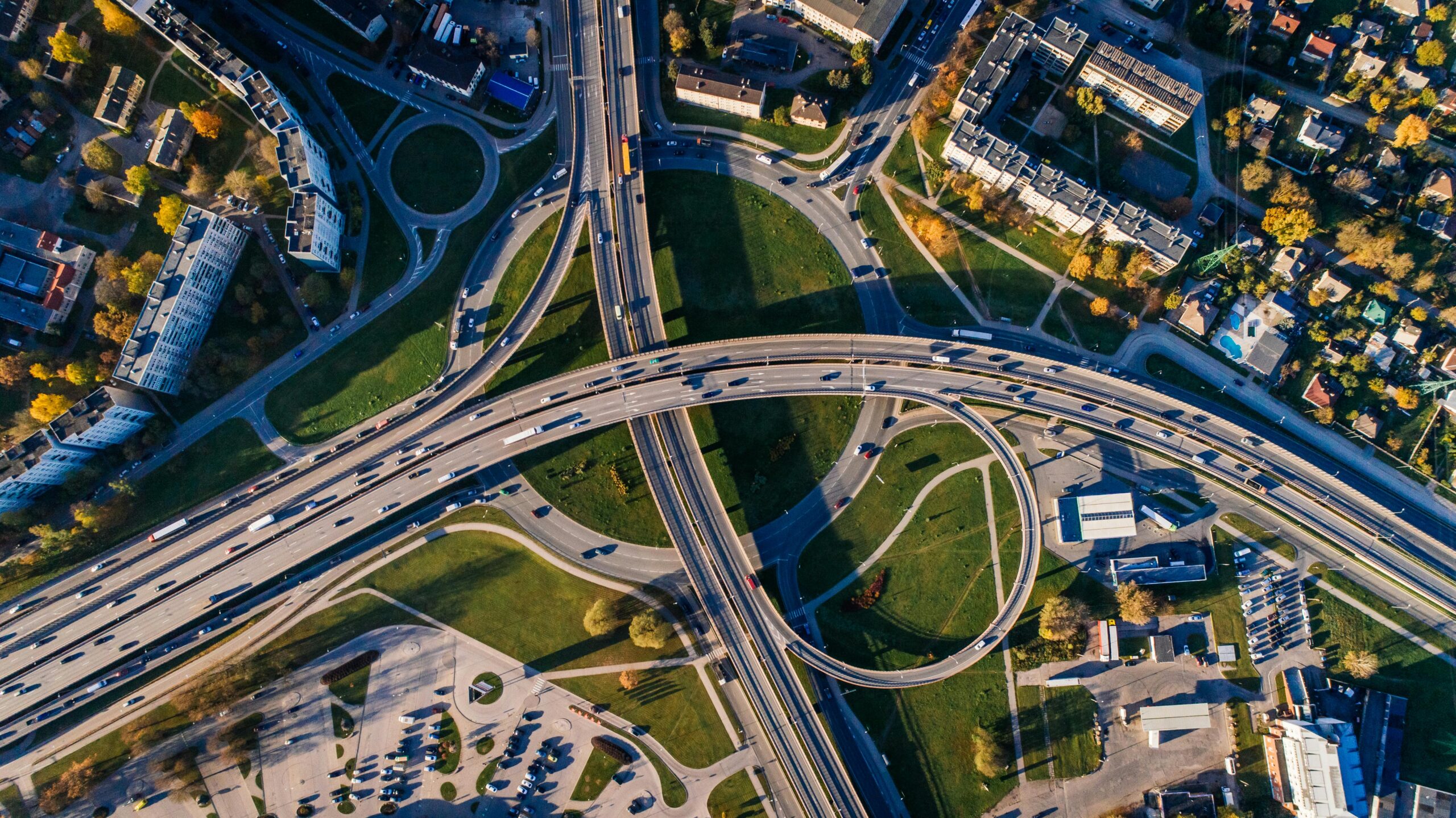Displacement and Dollars Down the Drain: The Data Behind California’s Highway Expansion Crisis

Highways Over Homes
For nearly 70 years, highway agencies across the United States have operated mainly behind closed doors — widening roads, displacing communities, and spending billions in public funds with almost no transparency or accountability. Highway expansion has always carried a cost, but that cost was kept hidden: unreported demolitions, untracked displacements, and unmeasured neighborhood and generational harm.
This year, that changed. For the first time in the state’s history, California’s highway agencies were required to disclose the human impacts of highway expansion. Under SB 695 (Gonzalez, 2023), Caltrans released data revealing how many homes and businesses were demolished between 2018 and 2023. The findings are not only alarming — they mark a turning point in how California’s policy- and decision-makers must confront the consequences of transportation decisions.
Welcome to California’s highway industrial complex: a system that pours billions into policies that make congestion, pollution, and inequity worse, while calling it progress.
For nearly seven decades, California has bankrolled highway expansions that sacrifice frontline communities to build more lanes that never actually solve congestion. In fact, data shows it’s made traffic worse. More lanes haven’t eased traffic — they’ve deepened harm, draining public dollars, displacing communities, and leaving drivers with longer commutes than before. The I-405 expansion is a prime example.
California’s Billion-Dollar Loop: When Expansion Fails to Deliver
If you want to understand the contradictions baked into California’s transportation priorities, look no further than the I-405 expansion. The project cost more than a billion dollars, took five years to complete, displaced homes and businesses, and still failed to reduce congestion. Traffic is now worse than before construction began.
Drivers lost countless hours to detours and delays, small businesses struggled or failed to survive years of construction impacts, and taxpayers ultimately financed a project that delivered none of its promised mobility benefits. This isn’t an anomaly; it’s a pattern.
At a time when California faces climate-driven disasters, severe budget deficits, affordability and housing crises, and rising displacement, the state continues to pour public money into short-term fixes that create long-term harm. Massive expansions like the 405 widenings show that we’re not solving problems; it’s just making the cost of failure higher.
But for California’s highway system, that’s business as usual.
Displacement by Design
Between 2018 and 2023, Caltrans added over 550 lane miles to the state highway system – enough to stretch from the Oregon border to Mexico – and spent billions doing it. Despite Caltrans’s claims that highway expansions reduce emissions, improve congestion, and facilitate economic development, the data says otherwise.
The consequences of highway expansion extend far beyond the miles of concrete poured. Highway projects destabilize entire neighborhoods and communities for generations.
SB 695 data confirms the scale and concentration of harm over just five years:
- 623 homes and businesses were demolished statewide between 2018 and 2023
- More than 90% of demolitions occurred in Los Angeles County
- 592 displacements came from the Interstate 5 expansion alone
- 200+ expansion projects planned with unknown impacts
- Impacts were concentrated overwhelmingly in low-income communities of color
And this five-year snapshot is only the beginning. Because Caltrans has never been required to disclose demolition and displacement data prior to 2018 or after 2023, we have no record of how many thousands of families have been displaced and homes destroyed. We also don’t know how many families may be at risk from future projects.
California’s infrastructure policy isn’t failing. It’s functioning exactly as designed.
Homes Before Highways
This long-standing pattern of displacement and the lack of statewide transparency needed to understand it is exactly why Greenlining created the Homes Before Highways Interactive Mapping Tool.
This tool brings SB 695’s data to life. It reveals where highway expansion projects have demolished homes and businesses across California over the past five years. With just a few clicks, users can see local impacts in their communities.
The map also makes visible the human cost California has ignored for decades.
Highway expansion destabilizes far more than property lines. With every added lane, nearby residents face higher rates of asthma, cancer, cardiovascular disease, and noise pollution — burdens that fall overwhelmingly on low-income communities of color. Families forced from their homes must navigate skyrocketing rents and limited affordable housing, often being pushed farther from jobs, schools, transit, and support networks.
Even after construction ends, the consequences linger: freeways divide neighborhoods, sever walking and biking routes, undermine local economies, and expose residents to ongoing pollution and crash risks. Highway expansion is not just a transportation decision — it deepens disparities in health, wealth, and the availability of housing.
Despite this, California continues pouring billions into a losing strategy. California’s highways still fail to deliver the outcomes they promise. Traffic hasn’t improved, safety hasn’t meaningfully increased, and road quality is 47th in the nation, costing drivers up to up to $1,000 a year in repairs. The SB 695 data makes clear that these projects are contributing to a deeper housing crisis by demolishing homes, displacing families, and destabilizing communities.
Homes Before Highways offers the transparency California has long lacked, giving the public tools to see these impacts clearly and push for investments that keep people housed, healthy, and connected.
Why This Moment Matters for California’s Future
California faces a set of converging crises: a severe housing shortage, an escalating affordability crisis, climate-driven disasters, and an aging transportation system with a $31 billion shortfall in funding. Highway expansion exacerbates every one of these challenges. It displaces families and small businesses, worsens inequality, increases emissions, and diverts resources away from forward-looking solutions that have the potential actually to improve transportation and housing goals.
The transparency created by SB 695 and the visibility offered by the Homes Before Highways tool arrive at a moment when California must decide whether to continue investing in outdated systems or commit to building a transportation and housing future that aligns with the state’s climate, equity, and affordability goals.
California now has the information it needs to choose a different path — and the stakes are too high to choose the wrong one.
If you want to understand what’s at risk in your own community, explore the SB 695 data yourself at greenlining.org/homes-before-highways/. And if you’re ready to join us in the fight for a safer, healthier, and more equitable transportation future, you can sign on to our petition to stop the widening of Highway 101, and sign up to our newsletter to receive updates on our transportation advocacy.




